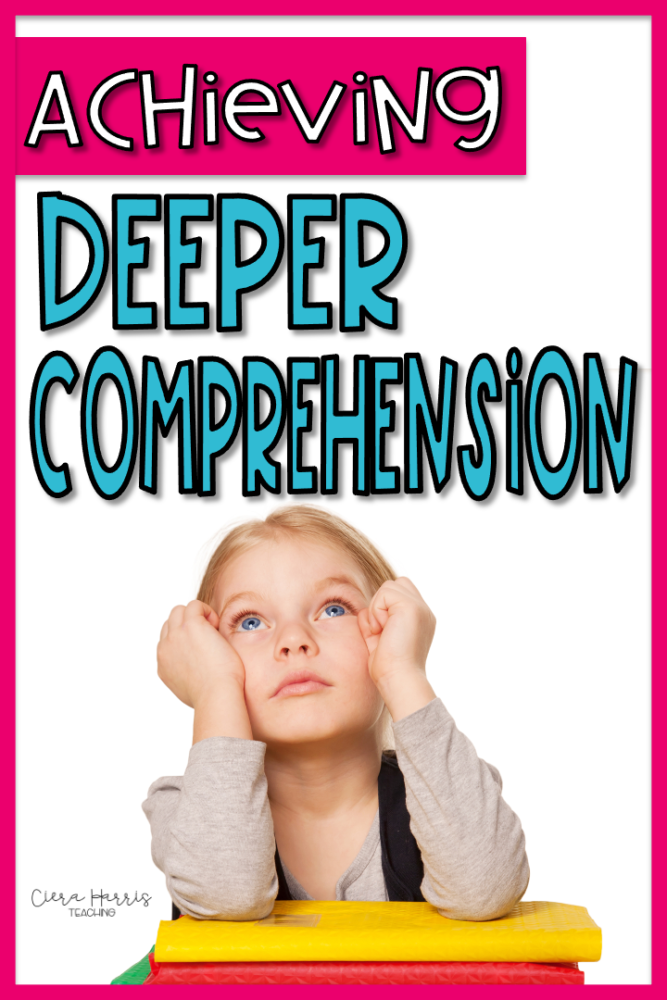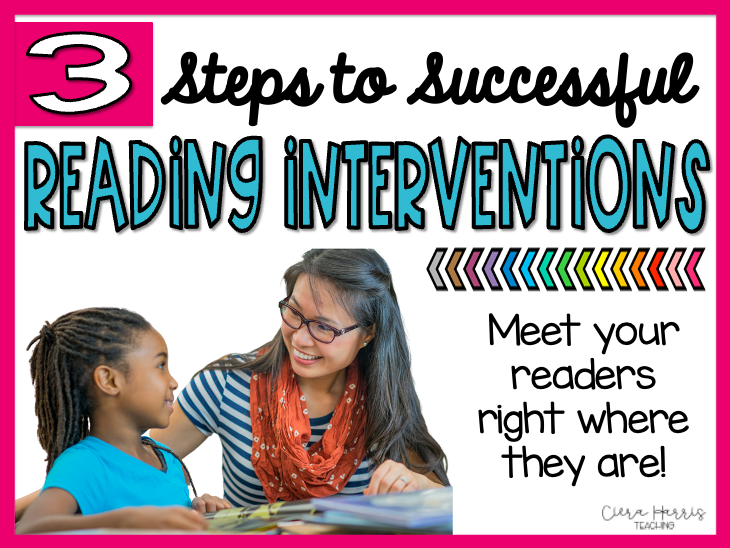As elementary reading teachers, we all know this is the ultimate goal – deeper level comprehension. But so often it is extremely HARD to get there. With barriers in the way like having a lack of accessible resources, decoding and fluency issues, and having a clear path of HOW to achieve deep comprehension, it’s no wonder we get stuck where we do. Today, I have gathered 5 of my best tips to help you and your students achieve deeper level comprehension.
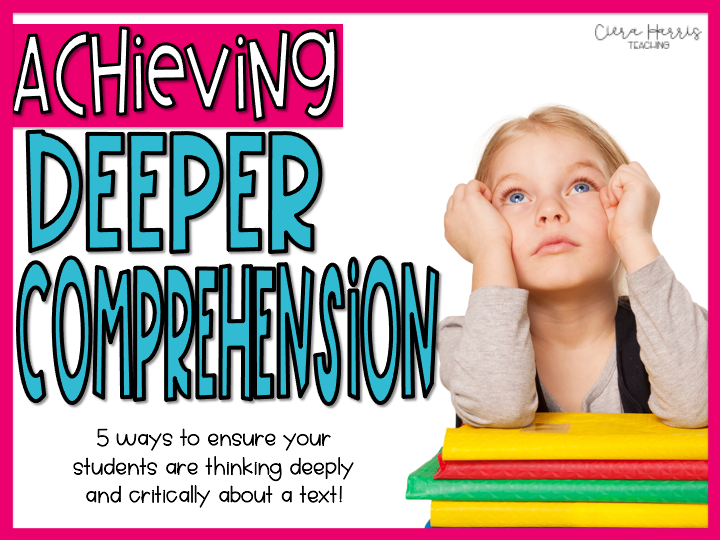
Want to watch the video instead? Check it out below! Make sure to subscribe to get updates on all new content!
Deeper Comprehension Tip #1
Make the reading about THEM (the students) and not the text! If we were to actually define ‘deep comprehension’, 9 times out of 10 that definition would include the process of going beyond the text. Students need to understand that the text is there to help them not only make meaning but also take away meaning. How did this text change their thinking? Did it change them? How does it affect their lives? We get to this place through reflective questioning strategies as well as focusing specifically on reading strategies.
One way I ensure I get to this point is to tier my questions. When discussing a text I always want to make sure I cover these four areas:
- What does the text say?
- How does the text work?
- What does the text mean?
- What does the text inspire you to do?
Each of these questions has a purpose. The first two are very literal and text-centric. They do not involve the reader. They require text-dependent questions such as many of the questions we ask on comprehension tests. The next question is more interpretive. Here is where students are making generalizations, predicting endings, making inferences etc. They are having to use their knowledge and schema plus what the text says to go beyond and dig deeper. Finally, the last question ensures that we are reaching that final level of deep comprehension – making the text about them. These are applied questions. Here is where we compare, judge, evaluate, recommend, etc. We need to focus on how this text has impacted their lives.
Deeper Comprehension Tip #2
Teach metacognition! Yes, I said it. This strategy needs to be explicitly taught (preferably at the beginning of the school year). If we want our students to dig deep, they need to know that they are and are not doing just that. When students are aware of their thinking, they can determine their own level of understanding. This is powerful for a reader and 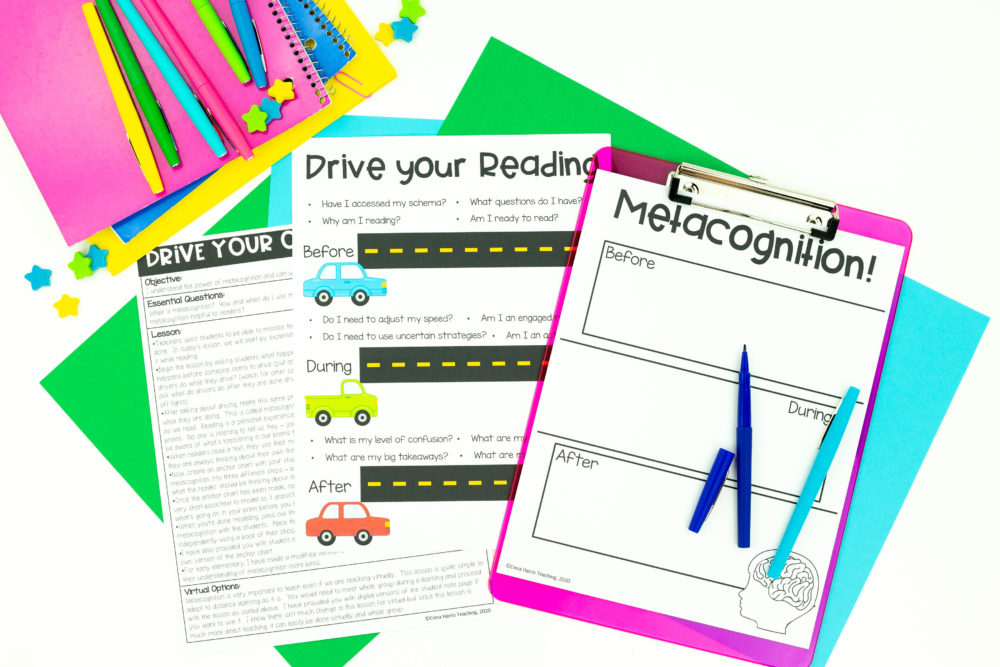 allows them to strategize to be able to think critically when needed.
allows them to strategize to be able to think critically when needed.
I like to break down teaching metacognition as a driving metaphor. For example: When we are driving, what do we do before we start? We get in the car, put on our seatbelt, check the mirrors, turn on the radio, etc. When readers read, they need to check their thinking before they read. They ask things like: Have I accessed my schema? What questions do I have? Why am I reading? and Am I ready to read?
The metaphor continues for when we drive (during and after) and the same for when we read as well. This basic breakdown allows readers to take control of their thinking and allows them to monitor and push themselves.
(The activities in the photo are from my FREE Boost Comprehension workshop that takes place in July. For more information about this workshop, please contact me at [email protected])
Deeper Comprehension Tip #3
Focus more on discussion and modeling!
There’s not a secret formula I’m going to be able to give everyone to magically get their students to comprehend on a deeper level. It takes time, intentionality through modeling, lesson planning, and the skills/strategies we teach. In order for students to experience a deeper level of comprehension themselves, they need to experience it through our modeling. Modeling reading can’t just be on a whim – it needs to be purposeful in what we say and when we say it. We are exposing the reading process for our students. The little we share, the little they will mimic when reading. The more we share and the deeper we go – the more they will go.
When it comes to discussion, students have to have processing time. They need to be able to hear multiple perspectives, get into productive arguments, clarify their thinking, etc.
Deeper Comprehension Tip #4
Ask the right questions!
Questioning is a learned skill by teachers over time. Asking ‘deep’ questions doesn’t come naturally. Typically, with a text, teachers tend to ask the ‘right there’ questions or closed questions. Instead, we want to ask questions where there is more than one right answer or completely open-ended. These questions need to be thought of ahead of time to ensure they are being asked.
Want to snag my exclusive open ended questioning guide? Enter in your name and HOME email address below and it’s all yours!
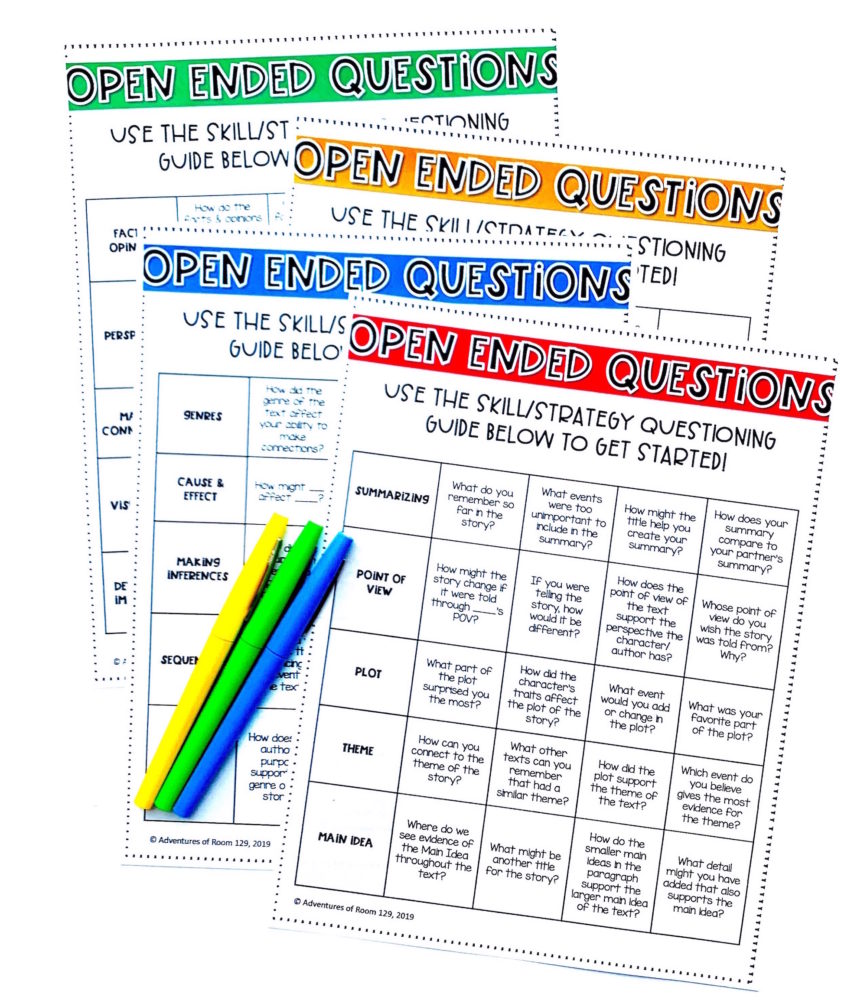
Deeper Comprehension Tip #5
Find a text that’s worthy of deep comprehension!
Not all texts are ‘deep’ worthy. We have to ensure that we’re providing a text that elicits some form of situation where students NEED to think. Basic ‘Sarah and Henry’ stories aren’t always going to do that. If you know you want to practice the deeper comprehension in a specific lesson or small group, take the time to find a text that’s going to get the students there. Excerpts from past read aloud are a great way to do this. Novels are loaded with opportunities for deep comprehension
I hope you grabbed a lot of ideas on how to help your students achieve deeper comprehension! If you want to save this post for later, please pin the image below!
